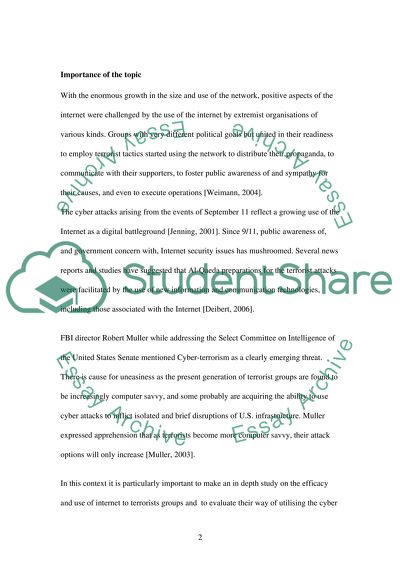Cite this document
(“The Value Of The Internet For Terrorists - Case Study Al-Qaeda Research Proposal”, n.d.)
The Value Of The Internet For Terrorists - Case Study Al-Qaeda Research Proposal. Retrieved from https://studentshare.org/politics/1517339-the-value-of-the-internet-for-terrorists-case-study-al-qaeda
The Value Of The Internet For Terrorists - Case Study Al-Qaeda Research Proposal. Retrieved from https://studentshare.org/politics/1517339-the-value-of-the-internet-for-terrorists-case-study-al-qaeda
(The Value Of The Internet For Terrorists - Case Study Al-Qaeda Research Proposal)
The Value Of The Internet For Terrorists - Case Study Al-Qaeda Research Proposal. https://studentshare.org/politics/1517339-the-value-of-the-internet-for-terrorists-case-study-al-qaeda.
The Value Of The Internet For Terrorists - Case Study Al-Qaeda Research Proposal. https://studentshare.org/politics/1517339-the-value-of-the-internet-for-terrorists-case-study-al-qaeda.
“The Value Of The Internet For Terrorists - Case Study Al-Qaeda Research Proposal”, n.d. https://studentshare.org/politics/1517339-the-value-of-the-internet-for-terrorists-case-study-al-qaeda.


